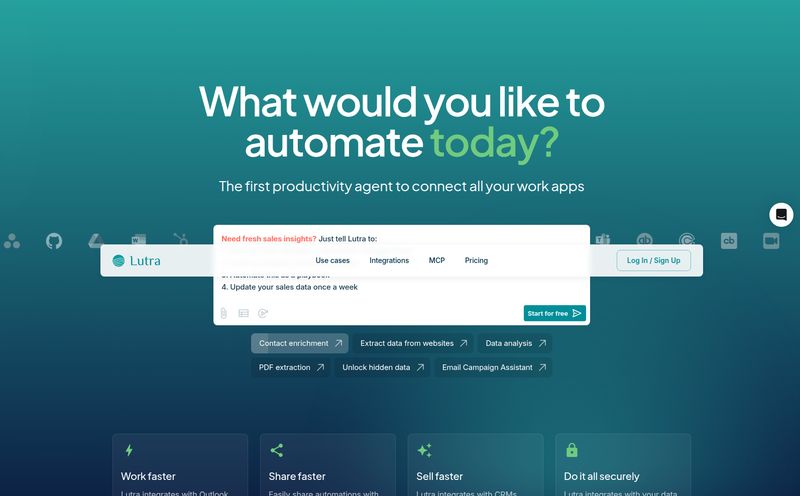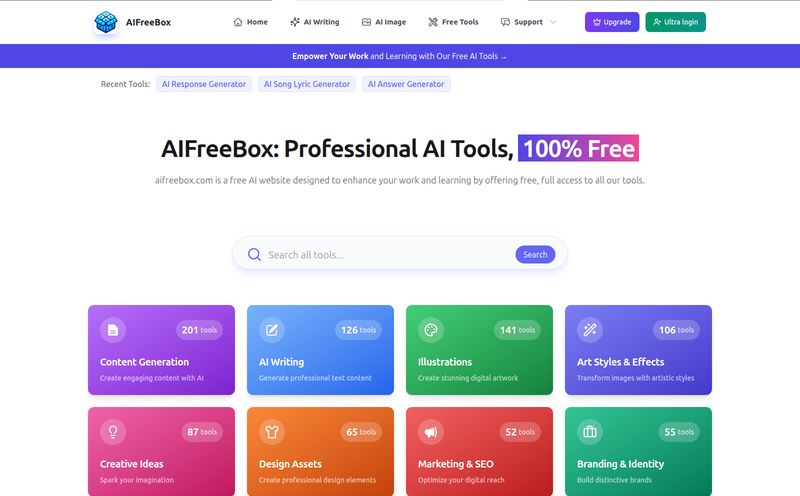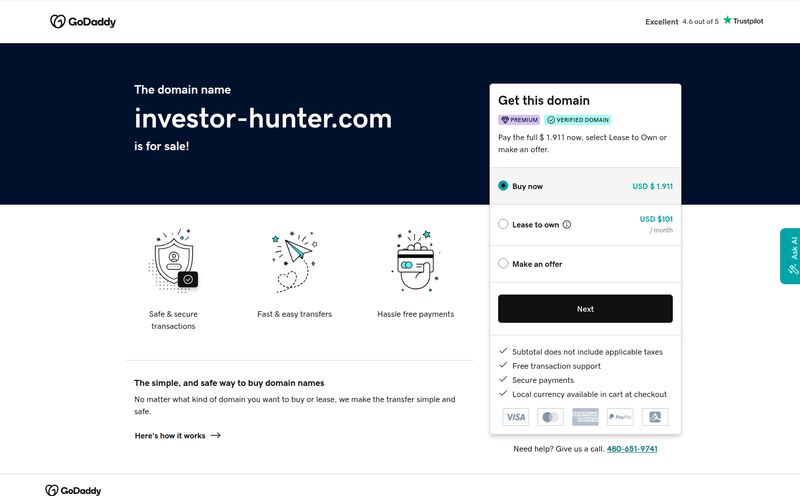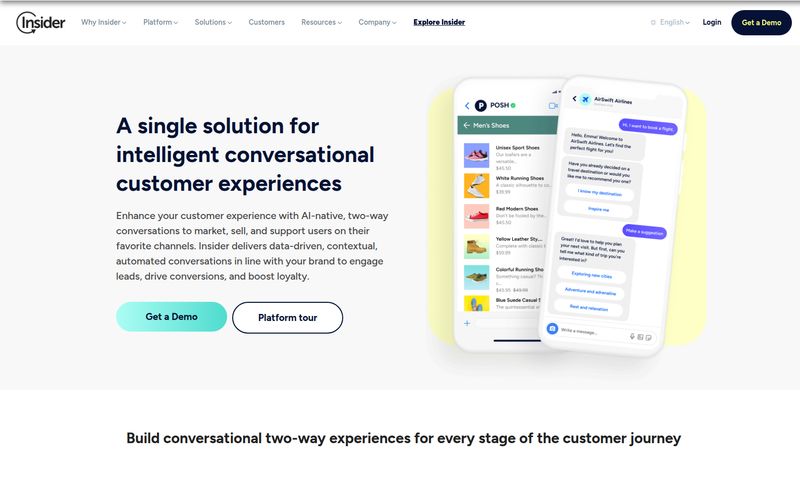For years, I've watched my e-commerce clients obsess over every click, every scroll, every abandoned cart. They have Google Analytics, Hotjar, and a dozen other tools telling them exactly what's working and what's not. It's a data paradise. But then I talk to my friends in brick-and-mortar retail, and it's a completely different story. It often feels like they're running their business on intuition and vibes. They know when it's busy, they know what sells, but the why behind customer behavior? That’s often a total black box.
It's a frustration I've heard time and time again. You see a customer walk in, browse an aisle, pick something up, put it back, and leave. What happened there? Was the price wrong? Was the display confusing? You'll never know. It’s like trying to navigate a ship in the fog. That’s why when I stumbled across Flame Analytics, I felt that little spark of excitement. You know the one. The feeling that someone finally gets it.
So, What Exactly is Flame Analytics?
Let's cut through the jargon. Think of Flame Analytics as Google Analytics, but for your physical location. It's a platform that uses AI, your existing CCTV cameras, and other data sources to give you a god's-eye view of what's happening in your space. We're talking about a tool designed to turn your store, mall, or hotel lobby from a mystery box into a data-rich environment.
It’s built for physical spaces that want to stop guessing and start making decisions based on cold, hard data. By combining different technologies, it promises to help you understand not just how many people walk through your doors, but what they do once they're inside.
Why Physical Space Analytics Isn't Just a 'Nice-to-Have' Anymore
Let's be real, the last few years have been a rollercoaster for anyone with a physical footprint. The competition from online retailers is relentless, and customer expectations have skyrocketed. People don't just go to a store to buy something anymore; they can do that from their couch. They go for the experience.
This is where the game is won or lost. Optimizing that experience is everything. Are your staff in the right place at the right time? Is your store layout encouraging exploration, or is it creating bottlenecks and frustration? These are no longer philosophical questions. They're million-dollar questions, and frankly, you need data to answer them. The old way of just 'having a good feeling' about the store layout is over. It has to be.
Breaking Down the Flame Analytics Toolkit
Alright, so how does it actually work? Based on what I've seen, Flame breaks its solution down into a few key areas.
Measuring Foot Traffic Like a Pro
This is the foundation. Yes, it counts people, but it’s more sophisticated than a simple beam-counter at the door. We’re talking about understanding peak hours with precision, which helps optimize staffing schedules. No more being overstaffed during the morning lull or understaffed during the evening rush. It also tracks things like returning vs. new visitors, giving you a sense of loyalty that was previously only available to websites.
Uncovering the Customer Journey
This, for me, is the most exciting part. Flame uses video analytics to create what are essentially heatmaps for your store. You can literally see which areas are hot (where everyone goes) and which are cold (the retail dead zones). It’s like being a detective for your own business. You can finally answer questions like:
- Where do customers linger the most? Maybe that's the perfect spot for a high-margin item.
- What's the most common path customers take through the store? You can optimize your layout based on this natural flow.
- Are people noticing that new promotional display we spent a fortune on?
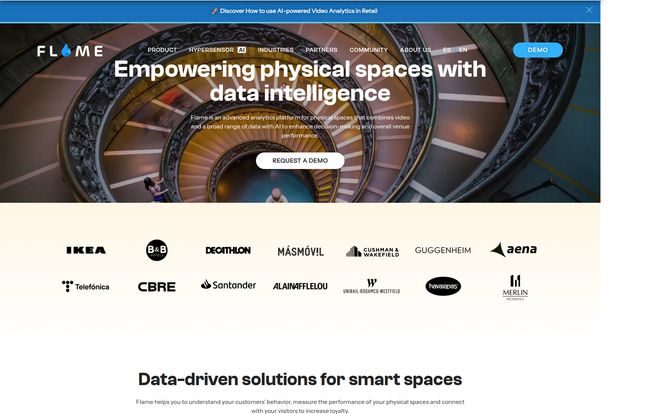
Visit Flame Analytics
This is about turning anonymous visitors into understandable patterns of behavior. It's powerful stuff, and it’s the key to making smart changes to your floor plan, merchandising, and marketing.
Connecting with Visitors (Without Being Creepy)
Data is one thing, but Flame also has a "Connect" feature aimed at building loyalty. This often works through things like guest Wi-Fi portals, where you can gather contact info (with consent, of course) and send targeted promotions or satisfaction surveys. It's a way to bridge the gap between the physical and digital, creating an ongoing conversation with your customers. I will say, there's a fine line here. You have to be transparent and provide value in exchange for that information. But when done right, it can be a huge driver of repeat business.
The 'Hypersensor' Magic
Their site mentions "Hypersensor" technology, which sounds a bit like something out of a sci-fi movie. From my understanding, this is their term for the central brain that unifies all the data sources—video from cameras, Wi-Fi data, sensor data, even PoS information. It’s the engine that makes sure all the different pieces are talking to each other to paint one single, coherent picture.
Who is This Really For?
Looking at their client list—we're talking heavy hitters like IKEA, Decathlon, and Santander Bank—it's clear this isn't for a small-town mom-and-pop shop (unless they're a very ambitious one!). This is an enterprise-grade solution for businesses that manage significant physical space and traffic.
I can see it being a game-changer for:
- Shopping Malls: To understand overall visitor flow, optimize tenant mix, and justify rent values with hard data.
- Large Retail Chains: For A/B testing store layouts across different locations and ensuring brand consistency.
- Public Venues: Think airports or museums managing queues and improving visitor experience.
- Hospitality: Hotels analyzing lobby usage or restaurant chains optimizing table layouts.
The Good, The Bad, and The Data-Driven
No tool is perfect, right? So let's have a frank chat. The biggest advantage here is obvious: you're getting data-driven insights for a part of your business that has likely been running on guesswork. You can finally have intelligent conversations about space optimization, backed by real numbers. The platform looks clean and visual, which is a huge plus for people who aren’t data scientists.
On the flip side, this isn't a magic wand. You need to have the right infrastructure to begin with, namely a decent CCTV system. And the old saying applies: garbage in, garbage out. The accuracy of your insights depends on the quality of the data you feed it. There's also the privacy elephant in the room. Monitoring visitors, even anonymously, requires a commitment to ethical data handling and transparency, something businesses need to be serious about.
What's the Damage? A Look at Pricing
So, the big question... how much does all this cost? Well, Flame Analytics plays this one close to the chest. You won't find a pricing page on their website. This is pretty standard for enterprise-level B2B SaaS platforms. Their model is built around scheduling a demo, discussing your specific needs (how many locations, what features you need, etc.), and getting a custom quote.
So, while I can't give you a number, I can tell you to expect a subscription-based fee that reflects the power and complexity of the tool. It's an investment, not a cheap plugin.
Final Thoughts: Is Flame Analytics the Real Deal?
In my opinion, yes, for the right company. Flame Analytics is addressing a massive, and oddly underserved, gap in the market. The world of physical retail and public spaces is crying out for the kind of analytical power their online counterparts take for granted.
If you're managing a large physical space and still making key decisions based on gut feelings, a tool like this could be genuinely transformative. It’s about more than just counting heads; it’s about understanding human behavior in the real world. And in today's competitive environment, that understanding is the most valuable currency you can have.
Frequently Asked Questions
What is Flame Analytics in simple terms?
Flame Analytics is an AI-powered platform that acts like Google Analytics for physical spaces. It uses data from cameras and sensors to help businesses like retail stores, malls, and hotels understand customer behavior and optimize their performance.
What kind of data does it collect?
It primarily collects anonymous data on visitor traffic (how many people come and go), customer journey (where they walk, what areas are popular), and dwell times (how long they stay in certain spots). It can also integrate with systems like guest Wi-Fi to collect contact information with user consent.
Is Flame Analytics difficult to set up?
It requires integration with your existing infrastructure, particularly your CCTV cameras and other data sources. While the platform itself is designed to be user-friendly, the initial setup will likely require some technical coordination with the Flame Analytics team to ensure everything is connected properly.
Is Flame Analytics GDPR compliant?
Given its operation in Europe and focus on visitor data, compliance with regulations like GDPR is crucial. They are designed to process data anonymously to respect privacy, but any business using such a tool should ensure their practices are fully compliant with local data protection laws.
Who are some companies using Flame Analytics?
Several major international brands trust Flame Analytics, including IKEA, Decathlon, CBRE, and Santander Bank, which indicates its reliability and effectiveness at an enterprise level.
How can I get pricing information for Flame Analytics?
Flame Analytics does not publish its prices online. To get a quote, you need to visit their website and use the "Ask for a Demo" form to schedule a meeting with their team to discuss your specific needs.
Conclusion
In a world where data is king, brick-and-mortar locations have been at a disadvantage for too long. Tools like Flame Analytics are leveling the playing field. They're turning the art of managing a physical space into a science, empowering businesses to be more efficient, more customer-centric, and ultimately, more successful. It's a smart move in a world that demands nothing less.
